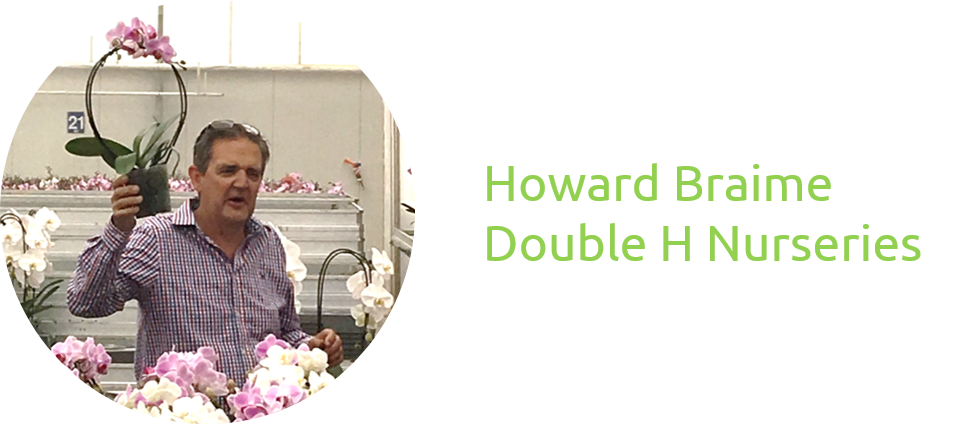Please click here to access the main AHDB website and other sectors.
Moving to responsibly sourced growing media
Thursday, 3 December 2020
Double H Nurseries is a family business in New Milton, Hampshire. They have been growing quality houseplants there since 1961, and their main crops are roses, orchids and chrysanthemums.
Howard Braime has been involved in the crop-growing side of the business for 33 years. Howard explains how they are moving to peat-free production and discusses some of the challenges they have to overcome to achieve this.
About Double H Nurseries
- 6ha of glasshouse production on site
- 5 million pot mums grown a year
- Can produce 20,000 pot roses (10.5 cm) a week
- 5 million orchids produced peat-free each year
- Reduced total peat use to less than 60% by volume in 2011
Targeting peat-free growing media
In response to the Government’s target to remove peat use from commercial horticulture by 2030, AHDB has been working with DEFRA, the Growing Media Association and ADAS to help the industry meet that target.
The research developed a model to predict the performance of new growing media blends as an alternative to peat. This means manufacturers can design and test new blends more quickly and cheaply and help give growers confidence in their performance.
As part of this process, we tested 213 blends containing green compost, bark, wood chip and coir, with a range of edible and ornamental crops.
Howard said, “Double H were proud to host some of the final grower trials for sustainable blends for our pot mums. Many growers visited us to see the final results in our 2 ha specialist unit.
“All but one of the six blends finished with good results, with only one blend showing any major feed deficiencies.
“We found no change in the timing or quality of the crop in the five successful blends, and many of the blends meant that sticking cuttings was easier.”
“We have been using 30% reduced peat blends for many years now, but we will be moving the pot mums into 50% reduced-peat blends in early 2021.”
About the trial
- Variety – Mount Aubisque Pink in 1.5 L pots
- Six growing media treatments
- 300 plants tested in 60 plots
- Filled with potting machine, cuttings stuck by hand
- Treated for pests, diseases and growth in line with commercial crop
- Three of the treatments worked extremely well
- Grown as a commercial crop
Read the research report for transitioning to responsibly sourced growing media

Getting the balance right
One of the challenges for commercial growers moving to peat-free growing media is ensuring they can get the nutritional and watering requirements right. Different growing blends may require higher or lower levels of nitrogen or more frequent watering, depending on the ‘recipe.’
Howard comments, “We are hoping to move our rose crops from 40% reduced-peat to 50% later in 2021. This will be more of a serious decision than with the pot mums. The roses are a fast-moving and nutritionally demanding crop.
“Before we started to experiment with a slow-release fertiliser in our pot mum crops, we saw some possible nutritional damage with a 40% peat-reduced blend. So we are working with suppliers to put small amounts of slow-release macro and micronutrients into the blends for our roses, which is a first for us with the ebb and flood irrigation.
“My main worry is the understanding of the fertiliser requirements and not only because the wood is taking the nitrogen, but because of what other elements may get used or leached out.
“Only when we understand how we can grow as equally good quality, well-fertilised crops, 100% reliably, 52 weeks of the year can we drop to zero peat.”
The future
A recent study funded by AHDB, Growing Media Association, HTA and Defra, showed that for the first time since the data has been recorded, the amount of peat contained in growing media is less than 50% for both professional and amateur use.
As part of the Bedding and Pot Plant Centre, AHDB will be continuing work on the management of new growing media blends, with regional events planned to help build the skills base in the industry and boost grower confidence.
Howard adds, “This project has benefited ornamental businesses. It has proven that there are blends with the same physical properties as peat. With more work on nutrition, this will further help the industry.”
Top 10 tips for going peat free

